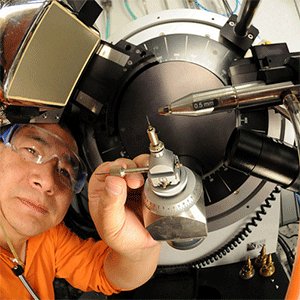Published: April 05, 2016 | Updated: September 25, 2025
Published: April 05, 2016 | Updated: September 25, 2025
Too Smart to Fail: The Future of CMMS and Predictive Maintenance
 Some in the CMMS (computerized maintenance management system) industry envision a future where critical equipment and facility systems proactively signal impending failures long before they occur. While seemingly futuristic, advancements in sensor technology suggest this may not be far-fetched.
Some in the CMMS (computerized maintenance management system) industry envision a future where critical equipment and facility systems proactively signal impending failures long before they occur. While seemingly futuristic, advancements in sensor technology suggest this may not be far-fetched.
The Evolution of Sensor Technology
The rapid development of miniature sensor technology is evident in everyday applications. The widespread adoption of EMV chip-equipped credit cards, featuring sophisticated computer processors for secure transactions, demonstrates the capabilities of small-scale, two-way communication technology.
Imagine Embedded Alert Chips in Critical Equipment
Consider the possibilities if critical components in machinery and infrastructure were equipped with similar microchip technology capable of sensing subtle changes in material integrity. An embedded alert chip (EAC) could report anomalies, such as cracks or stress, either through manual queries or automated reporting to a central system, enabling proactive intervention.
Current CMMS Capabilities and Limitations
Modern CMMS software already plays a crucial role in capturing various sensor-driven data, including meter readings, engine hours, and lubricant status. This information supports scheduled preventive maintenance efforts aimed at minimizing unexpected downtime.
Despite the capabilities of current CMMS, unexpected breakdowns due to factors like bearing contamination or unseen part stress still occur. Standard machinery often lacks embedded sensors capable of alerting the CMMS to these impending crises.
The Potential Impact of Advanced Sensor Integration
Maintenance costs and productivity are intrinsically linked to the effectiveness of a CMMS in managing asset availability. Imagine a CMMS seamlessly integrated with a new generation of microsensors embedded within equipment, providing real-time status updates on previously unobservable components. This integration could lead to significant repair cost savings and increased machine uptime.
Discover how streamlined maintenance processes can elevate production. Learn more.
Considering the Perspectives of Equipment Manufacturers
The widespread adoption of EAC technology might influence equipment lifecycles and planned obsolescence, potentially leading to varied perspectives among manufacturers.
The Strategic Advantage of Specifying Embedded Alert Chips
Maintenance managers should proactively consider including EAC embeds in their requests for quotation (RFQs) for new equipment. Integrating this technology into critical machinery could significantly extend its lifespan and reduce downtime, potentially yielding substantial cost savings and productivity gains that outweigh the initial investment.
As technology continues its relentless advance, innovations like embedded alert chips, building upon the foundations of effective CMMS usage, hold the promise of further revolutionizing maintenance practices and enhancing efficiency across industries.
FAQs
What is the future of CMMS in maintenance management?
The future of CMMS lies in integrating advanced sensors and predictive technology to prevent equipment failures before they happen.
How does predictive maintenance differ from preventive maintenance?
Predictive maintenance uses real-time sensor data to identify potential failures, while preventive maintenance relies on scheduled inspections and tasks.
Can CMMS software already use sensor data?
Yes, modern CMMS platforms capture data like meter readings, engine hours, and lubricant status to support preventive maintenance.
What are embedded alert chips (EAC) and how could they change maintenance?
EACs are tiny sensors that could detect cracks, stress, or wear in equipment and send alerts to a CMMS, enabling early intervention.
How would predictive technology impact maintenance costs?
By identifying issues early, predictive systems could lower repair costs, reduce downtime, and extend equipment lifespan.
Can Mapcon help integrate CMMS with sensor technology?
Yes, Mapcon’s technical experts can work with facilities to connect CMMS software to advanced sensors, ensuring a smooth transition into predictive maintenance.
MAPCON | 800-922-4336
MAPCON CMMS software empowers you to plan and execute PM tasks flawlessly, thanks to its wealth of features and customizable options. Want to see it for yourself? Click the button below to get your FREE 30-day trial of MAPCON!
Try It FREE!